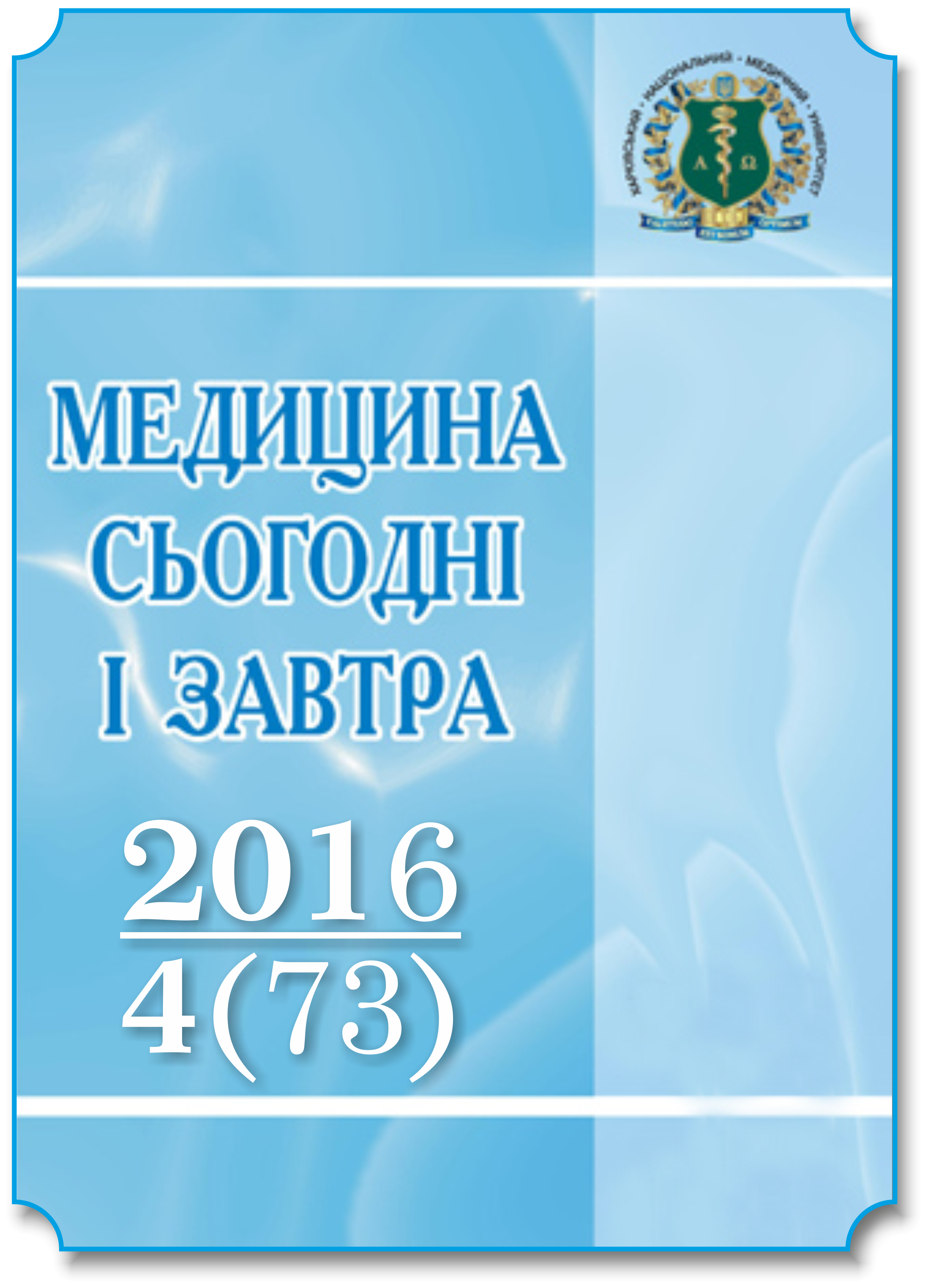Анотація
Оцінювали вплив азилсартану медоксомілу на офісний, середньодобовий та центральний аортальний тиск у хворих з легкою і помірною гіпертонічною хворобою. У дослідження увійшов 21 пацієнт з гіпертонічною хворобою першого та другого ступеня, яким призначали монотерапію азилсартану медоксомілом з поступовим підвищенням добової дози від 20 до 80 мг. Тривалість лікування становила 6 місяців. На кожному візиті (з інтервалом 4 тижні) проводили добове моні торування артеріального тиску та вимірювали офісний артеріальний тиск і центральний артеріальний тиск. Підсумково офісний САТ/ДАТ знизився на 21,8/10,2 мм рт. ст. – зі (152,5 ± 2,13/94,3±1,9) до (130,7±1,1/84,1±1,2) мм рт. ст. (р<0,005). Відбулося достовірне зниження середньодобових систолічного і діастолічного артеріального тиску, різниця становила (14,3±0,8) і (9,8±0,4) мм рт. ст. відповідно (p<0,0001). Підтвердилася ефективність азилсартану медоксомілу відносно зниження центрального артеріального тиску: порівняно з початковими цифрами (136,00±3,13) мм рт. ст. знизився до 119,00±2,92 мм рт. ст. (р<0,005). Отримані результати свідчать про високу ефективність азилсартану медоксомілу відносно офісного, середньодобового за результатами добового моні торування артеріального тиску і центрального аортального тиску у хворих на гіпертонічну хворобу І і ІІ ступеня.
Посилання
A comparative risk assessment of burden of disease and injury attributable to 67 risk factors and risk factor clusters in 21 regions, 1990–2010: a systematic analysis for the Global Burden of Disease Study 2010 / S. Lim, A. Flaxman, G. Danaei [et al.] // Lancet. – 2012. – V. 380 (9859). – P. 2224–2260.
World Health Organization. A global brief on hypertension Geneva, World Health Organization, 2013. – Резим доступа:
http://apps.who.int/iris/bitstream/10665/79059/1/WHO_DCO_WHD_2013.2_eng.pdf?ua=1
De Caterina A. Critical evaluation of the efficacy and tolerability of azilsartan / A. De Caterina, A. Harper, F. Cuculi // Vasc. Health Risk Manag. – 2012. – V. 8. – P. 299–305.
Effects of age, sex, and race on the safety and pharmacokinetics of single and multiple doses of azilsartan medoxomil in healthy subjects // R. Harrell, A. Karim, W. Zhang, C. Dudkowski // Clin Pharmacokinet. – 2016. – May; v. 55 (5). – P. 595–604.
Single-center evaluation of the single-dose pharmacokinetics of the angiotensin II receptor antagonist azilsartan medoxomil in renal impairment / R. Preston, A. Karim, C. Dudkowski [et al.] // Clin. Pharmacokinet. – 2013. – May; v. 52 (5). – P. 347–358.
Antihypertensive efficacy of the angiotensin receptor blocker azilsartan medoxomil compared with the angiotensin-converting enzyme inhibitor ramipril / G. Bönner, G.L. Bakris, D. Sica [et al.] // J. Hum. Hypertens. – 2013. – Aug; v. 27 (8). – P. 479–486.
Angeloni E. Azilsartan medoxomil in the management of hypertension: an evidence-based review of its place in therapy / E. Angeloni // Core Evid. – 2016. – V. 11. – P. 1–10. – Режим доступа: http://www.ncbi.nlm.nih.gov/pmc/articles/PMC4829189/#b14-ce-11-001
Unique binding behavior of the recently approved angiotensin II receptor blocker azilsartan compared with that of candesartan / S. Miura, A. Okabe, Y. Matsuo [et al.] // Hypertens. Res. – 2013. – Feb; v. 36 (2). – P. 134–139.
Effects of the angiotensin receptor blocker azilsartan medoxomil versus olmesartan and valsartan on ambulatory and clinic blood pressure in patients with stages 1 and 2 hypertension / W. White, M. Weber, D. Sica [et al.] // Hypertension. – 2011. – Mar; v. 57 (3). – P. 413–420.
A meta-analysis of randomized controlled trials of azilsartan therapy for blood pressure reduction / H. Takagi, Y. Mizuno, M. Niwa [et al.] // Hypertens. Res. – 2014. – May; v. 37 (5). – P. 432–437.
Azilsartan compared to ACE inhibitors in anti-hypertensive therapy: one-year outcomes of the observational EARLY registry / K. Anselm, P. Bramlage, A. Sebastian [et al.] // BMC Cardiovasc. Disord. – 2016. – V. 16. – P. 56.
The renin-angiotensin receptor blocker azilsartan medoxomil compared with the angiotensin-converting enzyme inhibitor ramipril in clinical trials versus routine practice: insights from the prospective EARLY registry / P. Bramlage, R. Schmieder, A.K. Gitt [et al.] // Trials. – 2015. – V. 16. – P. 581.
Kajiya T. Clinical benefits of azilsartan beyond blood pressure lowering? / T. Kajiya // Cardiovasc. Drugs Ther. – 2014. – Aug; v. 28 (4). – P. 293–294.
For estimating creatinine clearance measuring muscle mass gives better results than those based on demographics / A. D. Rule, K. R. Bailey, G. L. Schwartz, et al. // Kidney Int. – 2009. – V. 75 (10). – P. 1071–1078.
Comparison of the novel angiotensin II receptor blocker azilsartan medoxomil vs valsartan by ambulatory blood pressure monitoring / D. Sica, W. White, M. Weber [et al.] // J. Clin. Hypertens. (Greenwich). – 2011. – Jul; v. 13 (7). – P. 467–672.
Olmesartan improves pulse wave velocity and lowers central systolic blood pressure and ambulatory blood pressure in patients with metabolic syndrome / U. Raff, S. Walker, C. Ott [et al.] // J. Clin. Hypertens. (Greenwich). – 2015. – Feb; v. 17 (2). – P. 98–104.
Atenolol and eprosartan: differential effects on central blood pressure and aortic pulse wave velocity / Z. Dhakam, C. McEniery, J. R. Cockcroft [et al.] // Am. J. Hypertens. – 2006. – Feb; v. 19 (2). – P. 214–219.
